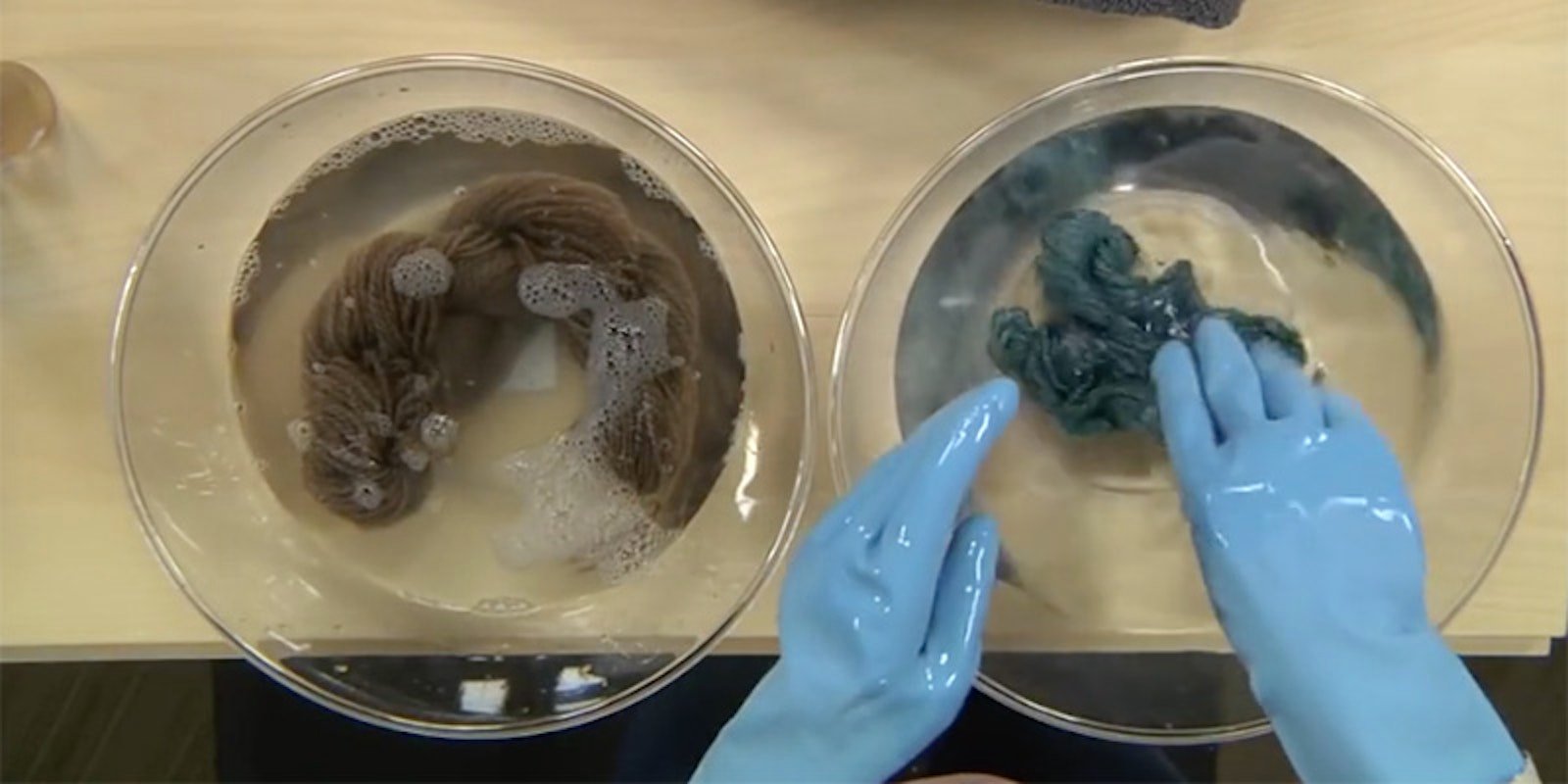Six Tricks I Learned from Kate Larson on Washing Wool
The other day, while spinning some Horned Dorset top from Beech Grove Fiberworks, followed by the CVM roving from Spinner’s Eden Farm, I was tempted just to sample and play. But knowing that Horned Dorset is Kate Larson’s favorite sock fiber, I decided to spin it with a worsted draw for a pair of short socks (for my big feet).
(In retrospect I may have spun and plied the sock yarn too hard—it’s not as elastic as the original fiber, but firmer-than-usual twist is good for socks.)
I decided to knit either a hat or close-fitting cowl from the dark CVM roving to keep the soft fibers near my face, so I spun an airy, somewhat uneven two-ply with a classic woolen long draw.
While plying the second yarn, I watched Kate’s course Finishing Up. Here’s what I learned from Kate about how to wash wool yarns:
Here’s what I learned from Kate about washing wool yarns:
1. I paid more attention to wash and rinse temperature.
I usually wash every yarn hot and rinse lukewarm, but on Kate’s advice I washed and rinsed with hot water for the worsted yarn and used a very hot wash and very cold rinse for the woolen yarn. I had decided to full the woolen, and the temperature differential is an important factor.
2. I threw the woolen yarn on the tabletop instead of holding one end and thwacking.
Kate pointed out that holding one end of the skein can distribute the twist unevenly, while tossing keeps things more even.
3. After rinsing and pressing, I snapped the skeins more frequently but more gently.
I’d always snapped everything hard, but this time I used a lighter touch.
4. I hung the skeins over a rounded hanger with as large a diameter as I could find.
I usually just toss the skeins over whatever’s handy, but Kate mentioned that hanging over something like a nail can cause a crease in the yarn.
Orville wanted to help me wash yarn but drew the line at getting his paws wet.
5. I turned the skeins every 15 minutes as they hung to dry.
The weight of the water as it pools at the bottom of the skein can affect the twist in different areas, so to avoid uneven twist between halves of the skein, I gave each one a quarter-turn every time I walked by.
6. I measured the skeins again after washing and drying.
I have a two-yard niddy-noddy, and I usually calculate finished yardage just by counting the number of wraps and multiplying by 2. As the skeins dried, though, I could see the woolen skein get shorter. When I re-measured the dried yarn, the skein was 64” instead of 72” in circumference—a difference of 12% (and a potential nasty surprise when I ran out of yarn).
Kate’s tips reminded me how important all of the different choices we make while finishing handspun yarn are to the end product.
—Anne
Featured Image: Kate Larson demonstrates washing wool in Finishing Up. Posted May 18, 2016. Updated July 9, 2017.


